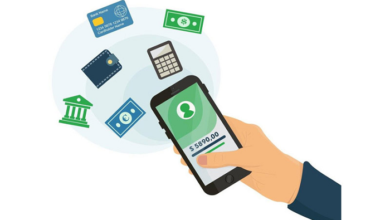Business Cards : A Comprehensive Guide to Creating, Designing, and Leveraging Your Personal Brand

Introduction
In the digital era, you might wonder if business cards are still relevant. However, business cards remain a powerful and effective networking tool that creates a tangible connection between professionals. Business cards communicate your brand, showcase your professionalism, and leave a memorable impression. This guide dives into every detail of creating, designing, and using business cards to elevate your professional image, giving you insights into why business cards should still be an essential part of your business toolkit.
Why Business Cards Still Matter
In a world dominated by social media profiles and LinkedIn connections, business cards provide a personal touch that digital tools often lack. A physical business card represents your brand in a more lasting way, ensuring that your contact details are always within reach. Business cards create a lasting impression and facilitate face-to-face connections that remain memorable long after the interaction. Whether at a conference or a networking event, business cards are an indispensable asset.
Key Elements to Include on Your Business Cards
Creating effective business cards requires knowing what information to include. The essentials are your name, job title, company name, phone number, email, and website. Additionally, you may want to add social media handles, a QR code linking to your online portfolio, or a slogan that defines your brand. Ensure that the layout of your business cards is clean and uncluttered, making it easy for recipients to find the information they need at a glance.
Choosing the Right Design for Your Business Cards
Design is crucial for buiness time as it represents your brand’s identity. A minimalist design may work for some industries, while a more vibrant style may suit others. Your choice of colors, fonts, and logo placement should reflect your personal or company brand. Don’t be afraid to add a unique touch, such as rounded edges, spot UV coating, or metallic accents, that can make your business cards stand out. Remember, business cards are often the first impression people have of your brand, so design with impact in mind.
Selecting the Perfect Material for Business Cards
The material of your business cards contributes significantly to the impression they leave. Standard materials include cardstock, but options like recycled paper, plastic, or metal can add an extra layer of sophistication. High-quality materials demonstrate that you take your brand seriously, while eco-friendly options reflect a commitment to sustainability. The texture and weight of your business cards communicate a lot about your brand, so choose a material that aligns with the message you want to convey.
Making Business Cards Functional with QR Codes
Incorporating QR codes on business cards is a modern way to add functionality. QR codes can link to your website, portfolio, or LinkedIn profile, making it easy for people to connect with you online. Including a QR code on your business cards bridges the gap between the physical and digital worlds, offering a quick and convenient way for recipients to learn more about you with just a scan.
Designing Business Cards for Different Professions
Not all business cards should look the same, as each profession has unique requirements. For example, a graphic designer’s business cards might showcase bold colors and unique typography, while a lawyer’s business cards would likely have a more traditional and formal design. Consider the nature of your industry and what would appeal to your target audience. Business cards should be tailored to align with both your profession and your brand’s personality.
Business Card Etiquette: When and How to Distribute
Knowing when and how to hand out business cards is crucial in professional settings. Always be prepared to exchange business cards at networking events, conferences, or meetings, but do so thoughtfully. It’s best to offer your business cards after establishing a connection, ensuring the recipient is interested in future contact. Present your business cards with both hands or facing up, allowing the other person to easily read it. Proper etiquette enhances the effectiveness of your business cards and leaves a positive impression.
Digital Business Cards: A Modern Twist
With advancements in technology, business cards have also evolved into digital formats. Digital business cards, accessible through apps or QR codes, offer a paperless alternative that is easily shareable and environmentally friendly. While traditional business cards remain popular, digital business cards add convenience and can be updated instantly. For professionals who prefer sustainable or tech-savvy options, digital business cards provide a modern twist on traditional networking tools.
Current Trends in Business Card Design
Keeping up with trends in business cards can give your networking tools a contemporary edge. Some popular trends include minimalist designs, bold typography, interactive elements like foldable cards, and the use of eco-friendly materials. Transparent or textured business cards are also gaining popularity. Staying updated with design trends can help your business cards stay relevant and impactful in today’s competitive landscape.
Tips for Maximizing the Impact of Your Business Cards
To maximize the impact of your business cards, always keep a few in your wallet or bag, ready to share at any opportunity. Follow up with individuals you give business cards to, turning a casual interaction into a potential business relationship. If you attend industry events or conferences, consider adding your business cards to gift bags or at information tables to increase visibility. Additionally, ensure that your business cards are consistent with your online presence, creating a cohesive brand experience for anyone who connects with you.
Conclusion
While the digital world offers many ways to connect, business cards remain an irreplaceable tool for building professional relationships. They serve as a personal reminder of an interaction and allow you to communicate your brand in a unique, tangible way. Whether you choose traditional, creative, or digital business cards, they are crucial for making meaningful connections. Business cards enhance your personal brand, showcase your professionalism, and ensure that your contact information is readily available. As networking continues to play a pivotal role in professional success, investing in well-designed business cards is essential.
FAQs
1. What information should I include on my business cards?
Your business cards should include your name, job title, company name, contact information (phone number and email), website, and optionally, a QR code or social media handles.
2. How do I choose the right design for my business cards?
The design of your business cards should reflect your brand and industry. Choose colors, fonts, and layout that align with your professional image, keeping the design clean and visually appealing.
3. Are digital business cards a good alternative to traditional ones?
Yes, digital business cards offer a convenient and eco-friendly alternative, allowing you to share your contact information instantly. However, traditional business cards still provide a more personal and memorable touch.
4. How can I make my business cards stand out?
To make your business cards stand out, consider unique materials, special finishes like foil stamping, and elements like QR codes. Creative designs or custom shapes can also make a lasting impression.
5. When should I distribute my business cards?
Distribute your business cards in professional settings such as networking events, conferences, or after meaningful conversations. Offer your card only when there is genuine interest in maintaining contact.



